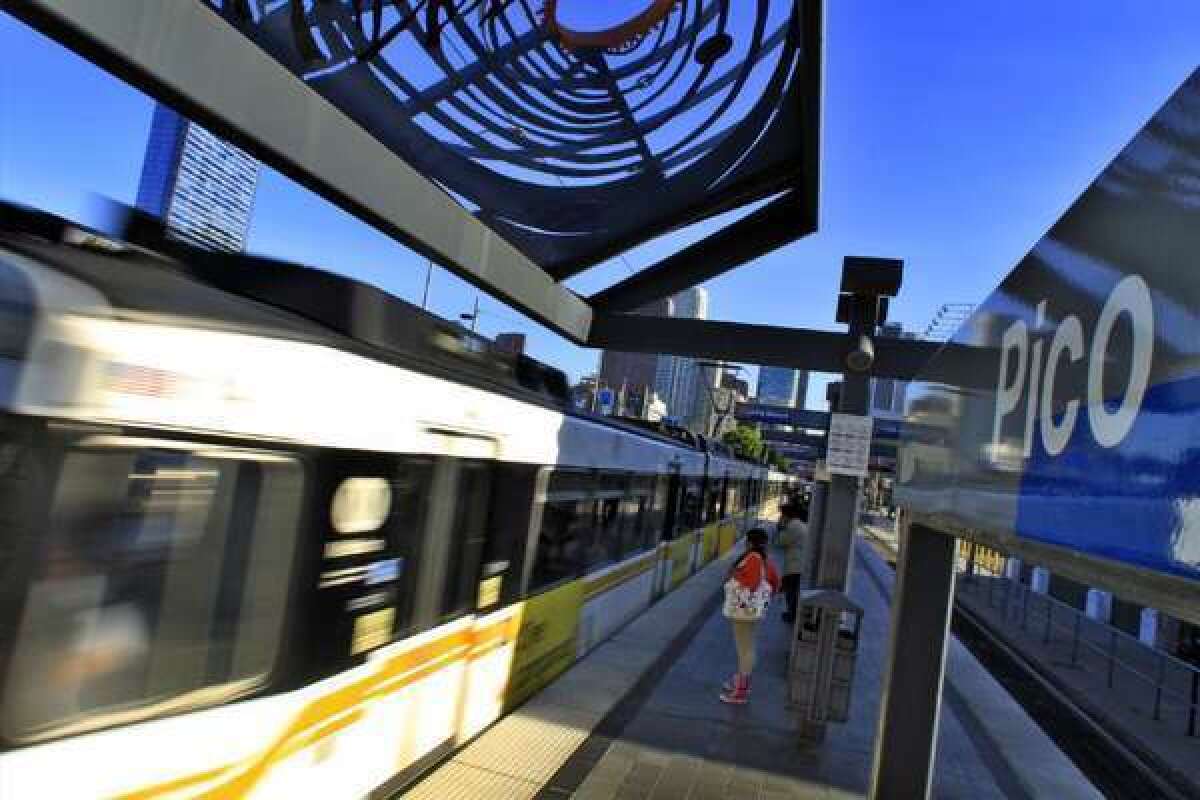Watch out MTA scofflaws, free rides are coming to an end

Every time I see someone walk through the subway turnstiles to board a train without using a Transit Access Pass card, I shake my head.
“Not fair,” I think.
Why am I paying $1.50 every time I want to ride the subway or light-rail lines when clearly, I could be doing this for free and probably get away with it? A $250 ticket is a scary proposition, but on my weekend trips on the Purple and Blue lines, I have yet to see someone get caught for evading the fare. The threat of being caught seems less and less likely with every trip.
But change is on the way. The Los Angeles County Metropolitan Transportation Authority is going to start locking the turnstiles so you can’t walk through without paying.
The MTA has been operating on the honor system for passengers. Call me a cynic, but that’s like assuming that every car comes to a complete at a stop sign when no one’s looking. They don’t call it a “California roll” for nothing.
The Times reported in May that locked turnstiles were coming to the Purple and Red lines by December. That’s not the case just yet, but it will happen this month or next, said David Sutton, interim deputy executive officer for the TAP program.
Locked turnstiles come with numerous benefits. Sutton said the subways and trains will be safer; though there are fewer passengers, there is increased revenue for the county, which theoretically means better service; and it gives the MTA a better picture of how many people use the system, when they use it and where they’re going.
It’s all part of the service’s evolution. The Los Angeles public transportation system is growing up. It’s moved away from paper tickets and into the electronic age. A greater understanding of how Angelenos use the system can lead to better service.
Some changes are already being considered, Sutton said. The MTA is exploring charging passengers on a distance-based system, similar to Bay Area Rapid Transit in Northern California, where you are charged based on where you get on and where you get off. Another way is to charge based on the window of time a rider might use the system in a given day.
After the MTA gets more data from the Purple and Red lines, it could consider locking gates on the rest of the system, Sutton said.
There will always be some holes, though. At the transfer station at 7th Street and Metro Center, passengers are supposed to pay when they switch lines. But the TAP card validators are so discreetly placed that not many people use them. Transfers there could eventually be free, Sutton said.
Authorities estimate that more than 5% of riders are evading fairs. Transit service bureau Cmdr. Patrick Jordan said deputies have issued more than 28,000 tickets for skipping fares on the Blue Line through October. With fines up to $250, that’s up $7 million off one line alone.
The fines weren’t an incentive to allow people to break the rules and catch them afterward, officials said. The honor system was simply a product of relying on paper tickets. Sheriff’s deputies are just doing their jobs.
“We’re socializing 1.5 million people to use rail,” Jordan said. “In New York and Boston, they grew up using rail. We’re retraining a whole population that’s still relatively new to them.”
Studies in Europe and New York showed that subways with tightly regulated entrances brought fare evasion down to 1% or 2%, Jordan said.
If the trade-off for better accountability is fewer scofflaws, increased revenue and hopefully, expanded service, count me in. It’s time to take the training wheels off for Angelenos.
ALSO:
Same-sex marriage meets the high court
Gay marriage: Scalia knew this day would come
More to Read
A cure for the common opinion
Get thought-provoking perspectives with our weekly newsletter.
You may occasionally receive promotional content from the Los Angeles Times.











